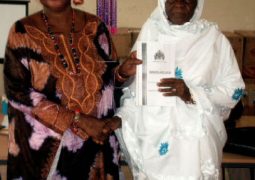Even
though The Gambia missed the target of the Abuja Declaration to halve the
burden of malaria by 2010, it is finally set to be the first country in
sub-Saharan Africa to eliminate the mosquito-borne disease, one of the biggest
killers in the country.
Malaria
prevalence is now just 0.2 per cent and the country is on a clear path to ‘no
new cases’ by the year 2020, according to the Catholic Relief Services (CRS),
and The Global Fund – the two organisations in the forefront with the Gambia
government supporting efforts and initiatives to eliminate what used to be the
biggest public health concern in the country.
This
is apparently the most pleasing news of the year, probably second to only the
unexpected peaceful exit of the former President Yahya Jammeh.
The
Gambia set a sample of how to get rid of a brutal dictator peacefully; it is
also setting a record of in the fight against malaria thanks to international
investment and a strong Gambian-led campaign.
Before
now, about 11 per cent of total deaths registered annually in The Gambia are
caused by malaria, according to the World Health Organisation data published in
2014.
For
children, one in five used to die before their fifth birthday, mostly due to
preventable childhood diseases, including malaria, the primary killer of young
children.
Many
children who survive an episode of severe malaria may suffer from learning
impairments or brain damage, according to research findings.
It
was a threat not only to health, but also to national development, as it
affects productivity in society.
The
disease, it has also been discovered, accounts for considerable lost days of
productivity among the adult population in the country.
However,
as part of efforts culminating to the near elimination of malaria, The Gambia
made strides in the control and prevention through the change of treatment
policy and the provision of the anti-malarial drug called Coartem in all public
health facilities, as well as an increased community mobilisation and
participation to prevent malaria.
The
work included a broad range of prevention and control methods such as ensuring
access and proper use of bed-nets; spraying walls with insecticides; and
ensuring rapid diagnosis, followed by proper treatment.
According
to statistics, Gambia’s landmark achievements in malaria control and prevention
include: malaria parasitic prevalence decreased by 95 per cent, from 4 per cent
in 2010 to 0.2 per cent in 2014, and malaria infections fell by 50 per cent
across all regions between 2011 and 2016.
Like the health minister, Ms Saffie
Lowe-Ceesay, said we are proud that The Gambia has made major strides in its
fight against malaria which makes “elimination of the disease now within sight
– a first for a sub-Saharan African country”.
However, just the like CRS’ chief of staff and
executive vice president of strategy and organisational development, said now
is not the time to stop or even slow our work for “the last mile will be the
hardest, and that the disease can come back”.
From now to 2010, the all-out-out war against
malaria now is not only to sustain the gains we made so far, but in securing
additional resources to win the battle against this deadly disease.
We know elimination is possible, but more
resources are needed to achieve this milestone.
There is a need for continued bilateral support from partners, donors
and the government alike.
“Malaria
eradication requires a 100% mind-set of success. There are no 70% or 80% or 90%
efforts that pass in malaria control and eradication. One single infected
mosquito that escapes can go on to bring death to dozens of victims in its
lifespan, lay more eggs and restart an outbreak that progresses from a few to
dozens to hundreds”
T.K.
Naliaka



